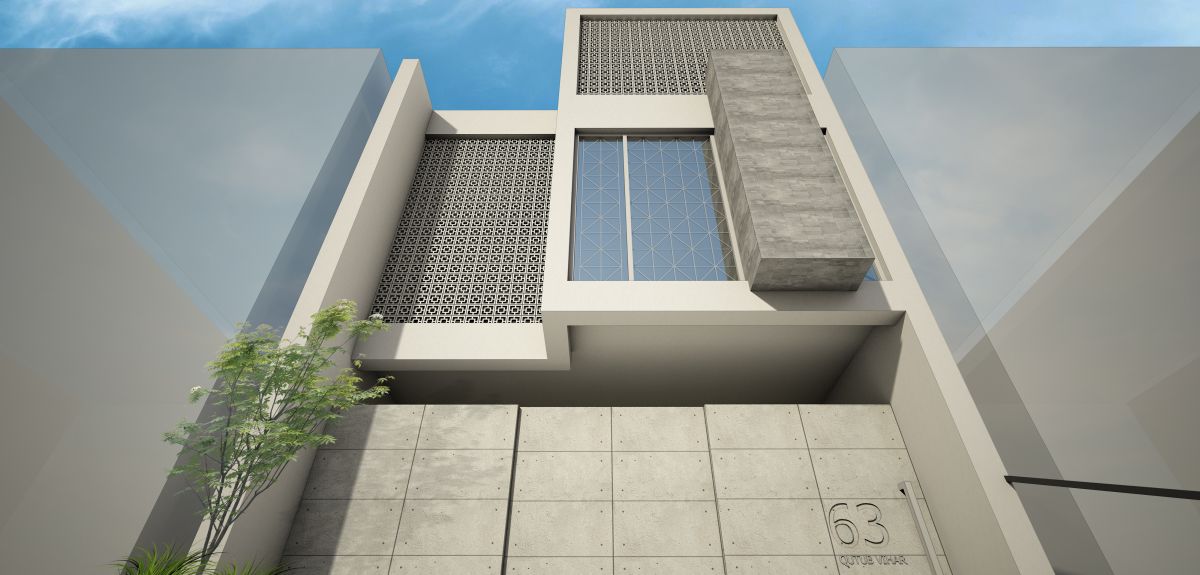Micro Houses aren’t a new thing in India, can be found in many dense urban settlements across big cities and smaller towns. Generally the owners of these houses are from socially, economically weaker backgrounds with very limited resources, knowledge and funds to construct houses that really fulfils their aspirations of a dream house. Moreover these settlements generally lack municipal building norms, infrastructures and facilities that further makes living in these settlements difficult.
Generally speaking, houses in these settlements are unorganised in terms of Design, scales and proportions as they are developed with different intentions and uses apart from living. Some of the houses run unorganised commercial activities like small shops, offices and small scale industries. Living among these neighbourhoods come with challenges of privacy, limited civic amenities amongst others.
This Project is a compact Residence in such a dense residential urban setting, where streets are narrow and building setbacks are rare. The Screens provided in the Front and Rear of the house, provide privacy and camouflage the utility zones, yet not restricting light and air flow. The central part of the Residence has skylights bringing light and greenery inside house as surrounding buildings are connected to each other on both sides. The extended façade on terrace provides outdoor private areas for recreation, as public parks are rare in surroundings.
The Materials used are not only low profile and maintenance free, but yet help to provide identity to the house, amongst many similar looking houses nearby. The Façade of the House in in White Texture paint with black slate stone mass breaking the monotony. The economical cement screens used were casted on site in moulds, to save costs.
This Project was an attempt to rethink how small houses can be designed considering the various hurdles present in terms of surrounding, lack of civic infrastructure and budget constraints.
Drawings –
Project Facts –
Project Name: Wind Screen House
Project Location: New Delhi, India
Design Firm: The Design Route, Gurugram, India
Design Team: Architect Sumeet Singroha, Architect Roshni Rastogi.























